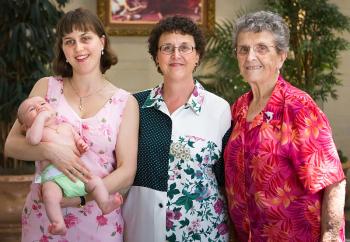Child care is the caring for and supervision of children from the time of birth until the age of thirteen. Childcare covers a wide number of activities, social and cultural conventions, and institutions.
In Western cultures there are two types of regulated child care by outside institutions. The first is center-based care, which includes daycares and preschools. The second is home-based care, which includes nannies and family daycare.¹ Additionally, parents may also choose to find their own caregiver like a babysitter or arrange child swaps with other parents.¹
Many child care institutions require that providers have extensive training in first aid and CPR. In the United States, background checks are required. In Canada, a vulnerable sector screening from the police is required to work with children.¹ Additionally, in the United States, drug testing is required to work with children.¹
Child care can be very costly for parents, costing upwards of $15,000 per year for each child enrolled.² 40 percent of children living in high-income families are generally cared for outside of the home, while 42 percent of children from low-income families are generally enrolled in daycare centers.²
The first few years of a child’s life are important for forming a base of education, morality, self-discipline, and social integration. When making the decision to put a child though child care, it is important to look at a few points.²
First, parents should not make a decision about child care too quickly.³ Parents should have a trial period of the service they want, and if employing a nanny, ask them to come to the home to observe their interaction with the children.³ Lastly, if the child care is not working, parents need to move their children without hesitation.³
In 2001, approximately 96 percent of individuals who worked in daycares and nursery schools were women.² These jobs are often undervalued and poorly compensated because they are similar to jobs that women have traditionally performed for free in the past.²
Traditionally, mothers have been regarded as the primary child care givers in the home. Because of the new demands for both husband and wife to work, there has been a huge increase in demand for non-parental child care.² Even when both partners are working, working mothers are more likely to pay for non-parental child care compared to working fathers.²
References:
1. ChildForum Childcare Information. Retrieved May 14, 2014, from http://www.childforum.com/options-a-differences-between-ece-programmes/73-private-childcare-arrangements-making-your-own-and-what-is-involved.html
2. Non-parental Child Care. Sex and Gender-based Analysis of this topic. Retrieved May 14, 2014, from http://www.womenshealthdata.ca/category.aspx?catid=146&rt=2
3. ChildForum Childcare Information. Retrieved May 14, 2014, from http://www.childforum.com/childcare.html
© BrainMass Inc. brainmass.com June 30, 2024, 10:15 am ad1c9bdddf

